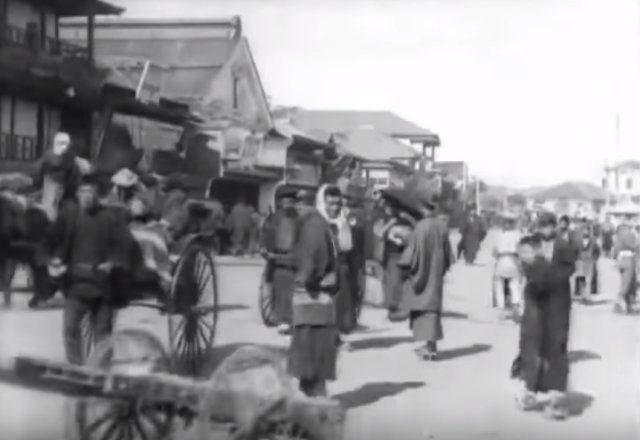
Many of the people in the video spent their early lives living in a Japan that was ruled by a shogun.
Japan spent the 17th and 18th centuries, as well as the majority of the 19th, in a state of government-imposed isolation, separating it from the technological advancements of the rest of the world. Once the country was finally opened to the international community, it put great efforts into modernizing as quickly as possible, making photos of the traditional Japan that had existed for generations hard to come by.
Even rarer, though, is film that preserves the sights of old Japan. Brief clips do exist, though, such as this fascinating street scene filmed in Japan in 1897, year 30 of the Meiji era.
The rustic wooden architecture and dirt street may have you thinking this is a look back at one of Japan’s minor villages, but that’s not the case at all. The film, recorded by French filmmaker and visual travelogue pioneer Constant Girel, was filmed on January 9, 1897, in Tokyo, and not in the far-flung outskirts of the capital. The street where Girel set up his camera was in the Nihonbashi district, not far from the Imperial Palace, and to show just how much the neighborhood has changed in the 122 years since, here’s what it looks like today.
Nihonbashi isn’t far from present-day Tokyo Station, where over a dozen train and subway lines, including Shinkansen bullet trains, converge. Girel’s video, though, predates the station’s construction by almost 20 years, and instead shows people getting around by foot, horse-drawn carriage, or rickshaw.
▼ Tokyo Station’s Nihonbashi entrance
With Girel’s film having been made just 30 years after the end of Japan’s feudal era, a movie camera, as well as a foreigner himself, were still unusual in Japan. Passersby, many of whom are old enough to remember first-hand a time when Japan was still ruled by a shogun, stop and stare at the unfamiliar sight.
At one point, though, a stately looking gentleman rolls up in a rickshaw. As he steps down into the street, we can see that he’s paired his traditional kimono with a Western-style top hat. It’s an early example of Japan’s enthusiasm for adopting eclectic cultural influences, and also a reminder that even the most ordinary snippets of daily life can one day become a fascinating preservation of a moment in history.
Source: YouTube/iconauta via Japaaan, Catalogue Lumiere
Top image: YouTube/iconauta
Insert images: Pakutaso, YouTube/iconauta, Wikipedia/Gungun01

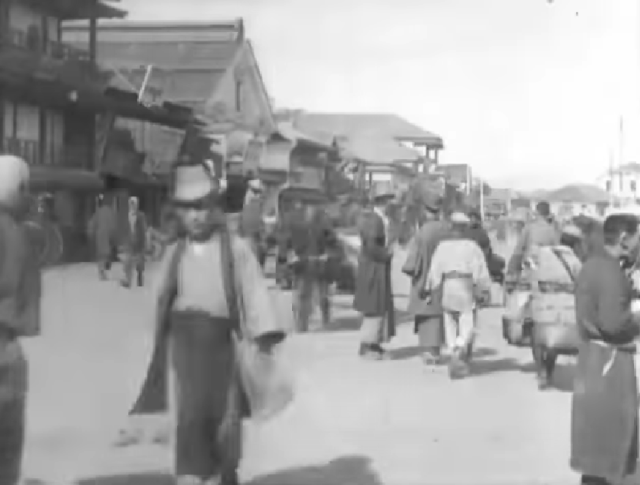
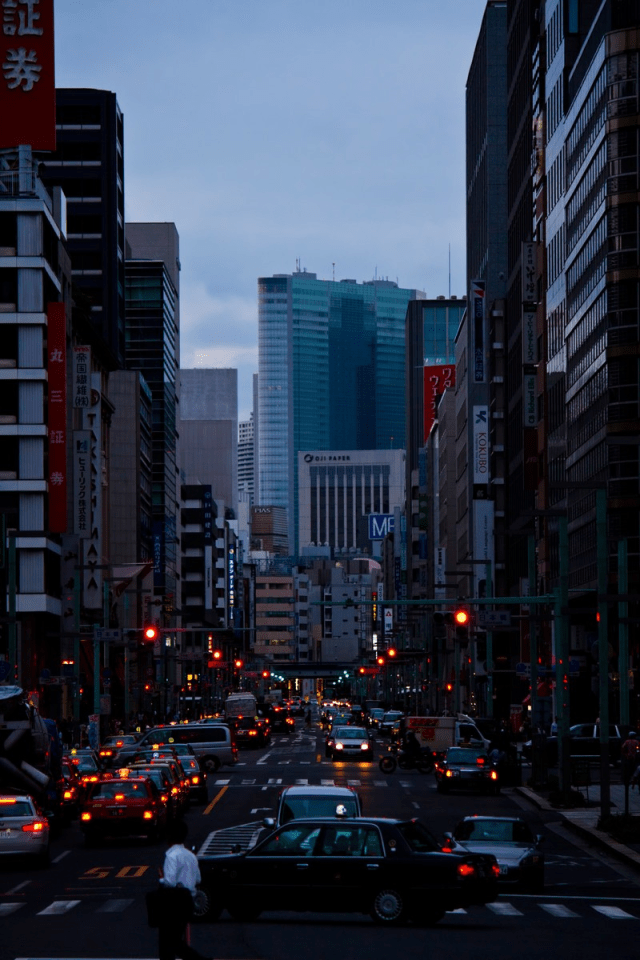
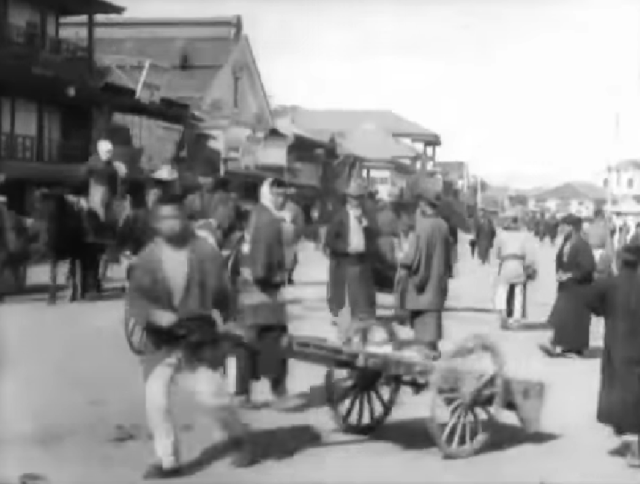
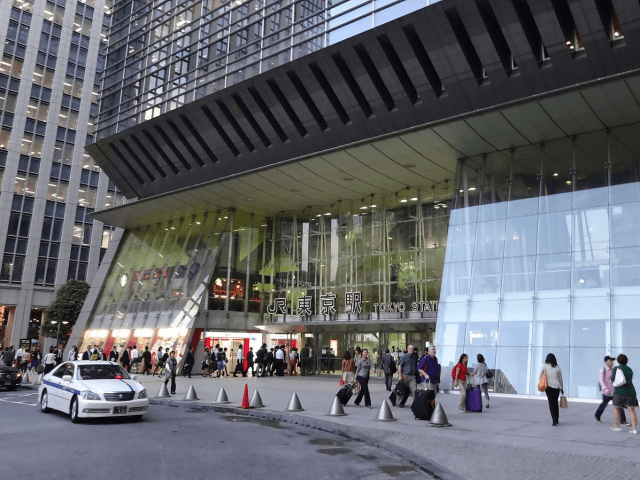
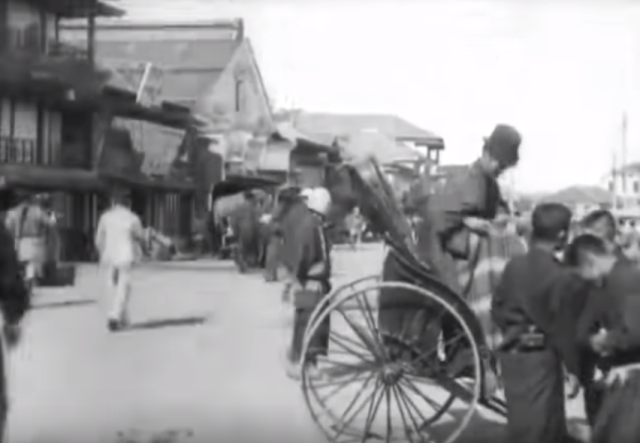
 “Get them drunk then chop off their heads.” Samurai’s assassination plot against U.S. envoys found
“Get them drunk then chop off their heads.” Samurai’s assassination plot against U.S. envoys found Harajuku Station will be demolished after the Tokyo Olympics and Paralympics
Harajuku Station will be demolished after the Tokyo Olympics and Paralympics Scholars confirm first discovery of Japanese sword from master bladesmith Masamune in 150 years
Scholars confirm first discovery of Japanese sword from master bladesmith Masamune in 150 years Here’s how one Tokyo neighborhood mixes modern technology and traditional culture to beat the heat
Here’s how one Tokyo neighborhood mixes modern technology and traditional culture to beat the heat Tokyo subway ”phantom station” reveals itself to passengers for first time in nearly 90 years
Tokyo subway ”phantom station” reveals itself to passengers for first time in nearly 90 years McDonald’s new Happy Meals offer up cute and practical Sanrio lifestyle goods
McDonald’s new Happy Meals offer up cute and practical Sanrio lifestyle goods More foreign tourists than ever before in history visited Japan last month
More foreign tourists than ever before in history visited Japan last month All-you-can-drink Starbucks and amazing views part of Tokyo’s new 170 meter-high sky lounge
All-you-can-drink Starbucks and amazing views part of Tokyo’s new 170 meter-high sky lounge Beautiful Sailor Moon manhole cover coasters being given out for free by Tokyo tourist center
Beautiful Sailor Moon manhole cover coasters being given out for free by Tokyo tourist center Arrest proves a common Japanese saying about apologies and police
Arrest proves a common Japanese saying about apologies and police The oldest tunnel in Japan is believed to be haunted, and strange things happen when we go there
The oldest tunnel in Japan is believed to be haunted, and strange things happen when we go there Our reporter takes her 71-year-old mother to a visual kei concert for the first time
Our reporter takes her 71-year-old mother to a visual kei concert for the first time Foreign English teachers in Japan pick their favorite Japanese-language phrases【Survey】
Foreign English teachers in Japan pick their favorite Japanese-language phrases【Survey】 11 different ways to say “father” in Japanese
11 different ways to say “father” in Japanese Is the new Shinkansen Train Desk ticket worth it?
Is the new Shinkansen Train Desk ticket worth it? Disney princesses get official manga makeovers for Manga Princess Cafe opening in Tokyo
Disney princesses get official manga makeovers for Manga Princess Cafe opening in Tokyo We try out “Chan Ramen”, an underground type of ramen popular in the ramen community
We try out “Chan Ramen”, an underground type of ramen popular in the ramen community Starbucks reopens at Shibuya Scramble Crossing with new look and design concept
Starbucks reopens at Shibuya Scramble Crossing with new look and design concept Beautiful new Final Fantasy T-shirt collection on the way from Uniqlo【Photos】
Beautiful new Final Fantasy T-shirt collection on the way from Uniqlo【Photos】 There’s a park inside Japan where you can also see Japan inside the park
There’s a park inside Japan where you can also see Japan inside the park Japanese convenience store packs a whole bento into an onigiri rice ball
Japanese convenience store packs a whole bento into an onigiri rice ball Studio Ghibli releases Kiki’s Delivery Service chocolate cake pouches in Japan
Studio Ghibli releases Kiki’s Delivery Service chocolate cake pouches in Japan Japan’s bone-breaking and record-breaking roller coaster is permanently shutting down
Japan’s bone-breaking and record-breaking roller coaster is permanently shutting down New definition of “Japanese whiskey” goes into effect to prevent fakes from fooling overseas buyers
New definition of “Japanese whiskey” goes into effect to prevent fakes from fooling overseas buyers Foreign passenger shoves conductor on one of the last full runs for Japan’s Thunderbird train
Foreign passenger shoves conductor on one of the last full runs for Japan’s Thunderbird train Our Japanese reporter visits Costco in the U.S., finds super American and very Japanese things
Our Japanese reporter visits Costco in the U.S., finds super American and very Japanese things Kyoto bans tourists from geisha alleys in Gion, with fines for those who don’t follow rules
Kyoto bans tourists from geisha alleys in Gion, with fines for those who don’t follow rules Studio Ghibli unveils Mother’s Day gift set that captures the love in My Neighbour Totoro
Studio Ghibli unveils Mother’s Day gift set that captures the love in My Neighbour Totoro Domino’s Japan now sells…pizza ears?
Domino’s Japan now sells…pizza ears? New Japanese KitKat flavour stars Sanrio characters, including Hello Kitty
New Japanese KitKat flavour stars Sanrio characters, including Hello Kitty Sales of Japan’s most convenient train ticket/shopping payment cards suspended indefinitely
Sales of Japan’s most convenient train ticket/shopping payment cards suspended indefinitely Sold-out Studio Ghibli desktop humidifiers are back so Totoro can help you through the dry season
Sold-out Studio Ghibli desktop humidifiers are back so Totoro can help you through the dry season Japanese government to make first change to romanization spelling rules since the 1950s
Japanese government to make first change to romanization spelling rules since the 1950s Ghibli founders Toshio Suzuki and Hayao Miyazaki contribute to Japanese whisky Totoro label design
Ghibli founders Toshio Suzuki and Hayao Miyazaki contribute to Japanese whisky Totoro label design Doraemon found buried at sea as scene from 1993 anime becomes real life【Photos】
Doraemon found buried at sea as scene from 1993 anime becomes real life【Photos】 Tokyo’s most famous Starbucks is closed
Tokyo’s most famous Starbucks is closed One Piece characters’ nationalities revealed, but fans have mixed opinions
One Piece characters’ nationalities revealed, but fans have mixed opinions We asked a Uniqlo employee what four things we should buy and their suggestions didn’t disappoint
We asked a Uniqlo employee what four things we should buy and their suggestions didn’t disappoint Princesses, fruits, and blacksmiths: Study reveals the 30 most unusual family names in Japan
Princesses, fruits, and blacksmiths: Study reveals the 30 most unusual family names in Japan Studio Ghibli’s new desktop Howl’s Moving Castle will take your stationery on an adventure
Studio Ghibli’s new desktop Howl’s Moving Castle will take your stationery on an adventure Get a taste of Japan’s past NOW, with these retro snacks and sweets at Tokyo department store
Get a taste of Japan’s past NOW, with these retro snacks and sweets at Tokyo department store Massive blizzard creates crazy snow scenes in Sapporo【Photos, videos】
Massive blizzard creates crazy snow scenes in Sapporo【Photos, videos】 Hayao Miyazaki draws Year of the Tiger illustration for New Year’s card to Studio Ghibli fans
Hayao Miyazaki draws Year of the Tiger illustration for New Year’s card to Studio Ghibli fans Shitty Shinjuku – 30-meter streak of human turd spotted in Tokyo’s busiest train station
Shitty Shinjuku – 30-meter streak of human turd spotted in Tokyo’s busiest train station Get your beer in artistic cans featuring work by ukiyoe master Hiroshige!
Get your beer in artistic cans featuring work by ukiyoe master Hiroshige! Japan has new sake Kit Kats produced by a 393-year-old Hyogo sake brewer
Japan has new sake Kit Kats produced by a 393-year-old Hyogo sake brewer Need a soak? Amazing interactive map lists every public bath and day-use hot spring in Tokyo
Need a soak? Amazing interactive map lists every public bath and day-use hot spring in Tokyo This triple jumbo shrimp rice bowl hides a shrimpressive surprise
This triple jumbo shrimp rice bowl hides a shrimpressive surprise The top 20 places to visit in Tokyo, as chosen by travelers
The top 20 places to visit in Tokyo, as chosen by travelers First-ever permanent Pokémon cafe set to open in Tokyo alongside new Pokémon Center megastore
First-ever permanent Pokémon cafe set to open in Tokyo alongside new Pokémon Center megastore Funny old-timey Japanese photo is a blast (of silly faces) from the past
Funny old-timey Japanese photo is a blast (of silly faces) from the past Beautiful ukiyo-e woodblock print artwork appears on three of Japan’s premium beer brands
Beautiful ukiyo-e woodblock print artwork appears on three of Japan’s premium beer brands The blood-soaked meaning behind the mysterious marks on the floor at Tokyo Station【Photos】
The blood-soaked meaning behind the mysterious marks on the floor at Tokyo Station【Photos】 Late to bed, early to rise: Statistics suggest Japan seriously skimps on sleep
Late to bed, early to rise: Statistics suggest Japan seriously skimps on sleep Shinkai’s “Your Name” tops South Korean box office with US$8.1 million
Shinkai’s “Your Name” tops South Korean box office with US$8.1 million
Leave a Reply